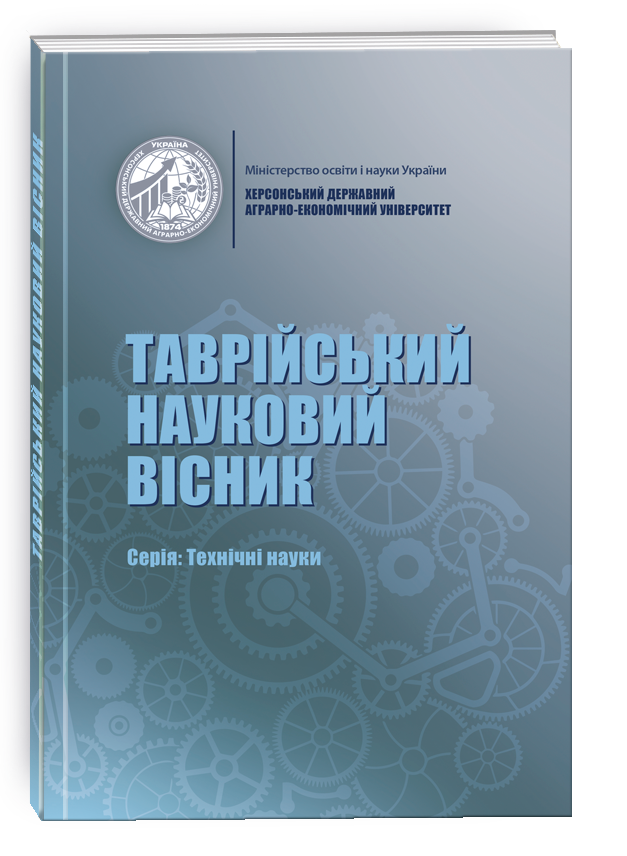THE INTENSIFICATION OF THE PROCESS OF ENZYMATIC CONVERSION OF STARCH WITH THE PURPOSE OF OBTAINING MALTIN
DOI:
https://doi.org/10.32782/tnv-tech.2023.2.19Keywords:
starch dextrinization, amylolytic enzymes, modified starch, maltin, microwave fieldAbstract
Maltins with a low degree of cleavage (5…8 %) are in particular demand in the food industry. They are good substitutes for fat in low-fat and low-calorie products, as they form soft thermoreversible gels that melt at high temperatures and solidify again at low temperatures. At room temperature, these gels mimic the appearance, taste, and texture of saturated fats and many fatty foods. The analysis of the existing technologies shows that they all have one main drawback – it is the difficulty of maintaining the temperature regime in industrial conditions with stepwise endurance to temperature pauses in the process of starch dextrinization. As a result of minimal changes in the technological process, products with properties different from those characteristic of maltin with a low degree of cleavage are obtained, the thermoreversibility of the resulting gels is lost. Our studies of the method of intensification of starch dextrinization by the microwave field showed its effectiveness and perspective. It allows you to achieve complete klesterization of starch granules, which is impossible to do using other high-temperature intensification methods, since small starch granules remain unklesterization even at temperatures of 120…140 °C. In the microwave field, the starch hydrolysis process is accelerated by 2.5 times compared to the classical method, and to reduce the dosage of α-amylase enzyme by half. On the basis of the conducted research, an improved technology of maltin is proposed, which is based on the use of an ultrahigh frequency field. This technology of maltin with a low degree of splitting allows to ensure the expected technological result – intensification of the process through the use of microwave energy and high quality of maltin due to instant klesterization and hydrolysis of starch by enzymes. The obtained maltins are able to restrain crystallization, melt when heated and recover when cooled, which makes it possible to use them as fillers and forming agents in the production of mayonnaise, ice cream, and desserts. The structure of the obtained maltin was studied using Raman-spectroscopy. Raman scattering spectra made it possible to study the conformational changes of maltin in comparison with native starch in solutions and in gels, hydration phenomena and association of their molecules. The obtained spectra made it possible to explain the reason for the change in the shape of the polysaccharide chain of maltin. The consequence of these changes is the difference in the degree of hydration of starch and maltin. In turn, this can explain significant differences in the ability to structure these polysaccharides.
References
Quintero J.A. Analysis and characterization of starchy and cellulosic materials after enzymatic modification / J.A. Quintero, J.A. Dávila, J. Moncada, O.H. Giraldo, C.A. Cardona. DYNA. 2016. № 83(197). РР. 44–51. https://doi.org/10.15446/dyna.v83n197.42729.
Li Z. The effect of starch concentration on the gelatinization and liquefaction of corn starch / Z. Li, W. Liu, Z. Gu, C. Li, Y. Hong. Food Hydrocolloids. 2015. № 48. РР. 189-196. https://doi.org/10.1016/j.foodhyd.2015.02.030
Bangar S.P. Enzymatic modification of starch: A green approach for starch applications. / S.P. Bangar, A.O. Ashogbon, A. Singh, V. Chaudhary, W.S. Whiteside. Carbohydrate Polymers. 2022. № 287. 119265. https://doi.org/10.1016/j.carbpol.2022.119265
Ahmad І. Microstructural study of enzymatically and non‐enzymatically hydrolyzed potato powder. / I. Ahmad, Z. Xiong, X. Hanguo, F. Lyu, R.M. Aadil, N. Khalid, N. Walayat, M.I. Taj, G. Zhang, W. Tang, Y. Li, M. Li. Journal of Food Processing and Preservation. 2022. № 46 (11). e16998. https://doi.org/10.1111/jfpp.16998
Mohamed A. Physicochemical Properties of Enzymatically Modified Starches / A. Mohamed, H. Alqah, M. Alamri, S. Hussain, A. Qasem, M. Ibraheem, H. Yehia, G. Shamlan. Processes. 2021. № 9(12). 2251. https://doi.org/10.3390/pr9122251
Mondal S. Microbial Amylase: Old but still at the forefront of all major industrial enzymes / S. Mondal, K. Mondal, S.K. Halder, N. Thakur, K.C. Mondal. Biocatalysis and Agricultural Biotechnology. 2022. № 45. 102509. https://doi.org/10.1016/j.bcab.2022.102509
Alqah H. Effect of annealing and α-amylase extract on the rheological properties, syneresis, and water holding capacity of different starches. / H. Alqah, M.S. Alamri, A.A. Mohamed, S. Hussain, A.A. Qasem, M.A. Ibraheem, H.M. Yehia. Food Science and Technology. 2022. № 42. https://doi.org/10.1590/fst.83821
Zhong Y. Generation of short-chained granular corn starch by maltogenic α-amylase and transglucosidase treatment / Y. Zhong, T. Keeratiburana, J.J.K. Kirkensgaard, B. Khakimov, A. Blennow, A.R. Hansen. Carbohydrate Polymers. 2021. № 251. 117056. https://doi.org/10.1016/j.carbpol.2020.117056






